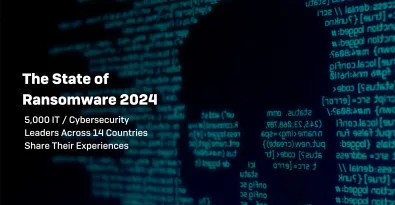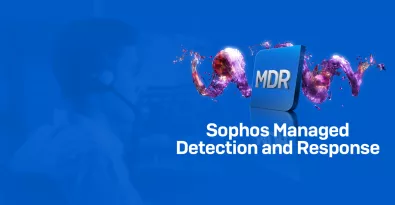A threat actor can penetrate and compromise your security defenses at any time. A threat actor can be a single person inside or outside your organization. It can be a group, an organization, or even a country involved in a targeted cyberattack. A threat actor is defined as anyone with the potential to negatively impact your company’s security posture. To be more specific, a threat actor is anyone who is either a key driver of or participates in a malicious action that targets an organization's IT security.
What is a Threat Actor?
A threat actor refers to an individual, group, or entity that carries out malicious activities with the intent of causing harm, exploiting vulnerabilities, or gaining unauthorized access to computer systems, networks, data, or other valuable assets. Threat actors can encompass a wide range of motivations, skills, and resources, and they can operate in various contexts, such as cybercrime, espionage, hacktivism, and state-sponsored activities.
Threat actors can be classified into different categories based on their motives and objectives:
- Career Cybercriminals: This is the most common type of threat actor. Their attacks are intended to steal data for financial gain. Sometimes they will make that data inaccessible to the victim until they pay a hefty ransom, otherwise known as ransomware. Working alone or in a group, their primary motivation is money. Their attack arsenal is made up of phishing attacks, ransomware, malware, social engineering, and other techniques. They engage in activities like stealing sensitive information (such as credit card data, personal information), conducting ransomware attacks, or conducting fraud.
- Hacktivists: Hacktivist threat actors are driven by political, social, or ideological causes. Hacktivists are not primarily motivated by money but rather by a need to publicize an organization's misdeeds or to be a part of a political or social movement. They may target organizations, websites, or systems to promote their beliefs or make a statement.
- State-sponsored Actors: These are government-backed entities that conduct cyber espionage, sabotage, or other offensive activities to advance their nation's interests. They often possess advanced capabilities and significant resources.
- Insiders: Insiders are individuals within a business. They misuse their close access to systems, data, or information for personal gain, espionage, or sabotage. An insider can be an employee, third-party contractor, or partner who wants to get at organizational data and/or compromise key processes (think Edward Snowden).
- “Script Kiddies”: These are typically inexperienced individuals who use existing hacking tools and techniques without a deep understanding of the underlying technology. They may engage in cyberattacks for fun or to impress others.
- Organized Crime Groups: Criminal organizations may use cyberattacks as part of their broader criminal activities, such as drug trafficking or money laundering.
- Terrorist Groups: Some terrorist organizations may use cyber-attacks as a means of furthering their goals, disrupting services, or causing fear. Terrorist organizations are also a type of threat actor when they indulge in cyber-terrorism for propaganda and for political, ideological, and financial purposes.
Understanding the motivations, techniques, and objectives of threat actors is crucial for cybersecurity professionals, law enforcement agencies, and organizations to develop effective strategies for the detection, prevention, and mitigation of cyber threats.
What are Threat Actors’ Motivations?
To help prevent threat actors from succeeding, you should first examine why threat actors are targeting your systems or data in the first place. Is it for financial gain, political reasons, espionage, activism, revenge, or some other purpose? Some common motivations for threat actors include:
- Financial Gain. Many cybercriminals are primarily motivated by financial gain. They seek to steal sensitive information, such as credit card data, personal information, or login credentials, which they can sell on the black market or use for fraudulent activities.
- Espionage. Nation-states, corporate competitors, or other entities may engage in cyber espionage to gather sensitive information, trade secrets, intellectual property, or government secrets for political, economic, or strategic advantage. Governments or state-sponsored entities may also conduct cyber operations to advance their national interests, engage in geopolitical maneuvering, or gather intelligence.
- Hacktivism. Hacktivists are individuals or groups with political or social motives. They target organizations, websites, or systems to promote their ideologies, raise awareness for specific causes, or protest against perceived injustices.
- Sabotage and Disruption. Some threat actors aren’t motivated by money and instead aim to disrupt critical infrastructure, services, or operations for political or ideological reasons. This can lead to significant financial losses, loss of brand or personal reputation, or public inconvenience.
- Personal Vendettas. Individuals may carry out cyberattacks out of personal grievances, seeking revenge against a particular person, organization, or entity. For example, employees, contractors, or partners with access to sensitive information or systems may misuse their privileges for personal gain, revenge, or other reasons.
- Ransom. Ransomware attacks involve encrypting your data and demanding a ransom payment in return for the decryption key. Financial gain is the primary motivation, and victims are often coerced into paying to regain access to their data.
- Political Discord. Extremist groups may use cyber methods to spread propaganda, recruit members, and coordinate activities. Their motivation is often driven by ideological or political beliefs.
- Competitive Advantage/Stealing Trade Secrets. Business rivals might engage in cyber espionage or attacks to gain a competitive edge, such as stealing proprietary information or disrupting a competitor's operations.
- Thrill-Seeking and Notoriety. Some individuals are motivated by the promise of fame and the challenge and excitement of hacking into systems, networks, or websites. They may seek recognition or notoriety within hacker communities. In other words, some hackers just want “bragging rights.”
Threat actors' motivations can be complex and multifaceted, and they may evolve over time. Organizations and individuals must remain vigilant and adopt proactive cybersecurity measures to mitigate the risks posed by these different motivations.
What are Threat Actors’ Capabilities?
Threat actors can possess a multitude of skills, tools, resources, and techniques to carry out malicious activities. These capabilities can vary widely depending on the motivations, expertise, and resources of the threat actor.
Common capabilities a threat actor can use include:
- Malware development and deployment (viruses, ransomware, trojans), or ransomware-as-a-service
- Exploitation of software vulnerabilities
- Phishing attacks and social engineering in order to gain access to passwords
- Identity theft and credit card fraud
- Money laundering through various digital channels
- Website defacement and DDoS attacks to disrupt online platforms.
- Data breaches and leaks expose sensitive information.
- Social media manipulation to spread their message.
- Coordinated campaigns against specific targets, such as spear phishing, social engineering, and business email compromise
In scenarios involving state-sponsored threat actors, the individual typically possesses highly sophisticated capabilities and often engages in espionage, cyber warfare, and geopolitical influence. Their capabilities include:
- Advanced persistent threats (APTs) using sophisticated malware and zero-day exploits
- Long-term infiltration and data exfiltration from targeted organizations
- Supply chain attacks to compromise widely used software or hardware
- Creation and deployment of advanced cyber weapons
Keep in mind that threat actors' capabilities are continually evolving as technology advances and new tools and techniques become available. Organizations and governments must stay vigilant and adopt robust cybersecurity measures to defend against these diverse threat actors and their capabilities.
What Are Some Examples of Threat Actors?
There have been several famous threat actors who have succeeded in carrying out significant cyberattacks or malicious activities. Here are a few examples:
- Advanced Persistent Threat 29 (APT29) - Cozy Bear: A Russian state-sponsored hacking group believed to be responsible for the 2016 hacking of the Democratic National Committee's email servers, which led to the leaking of sensitive information during the U.S. presidential election.
- Lazarus Group: A North Korean hacking group linked to numerous cyberattacks, including the 2014 Sony Pictures hack, which resulted in the leaking of sensitive company data and internal communications.
- APT28 - Fancy Bear: Another Russian state-sponsored hacking group, Fancy Bear, was behind various cyber espionage operations, including the hacking of the World Anti-Doping Agency (WADA) in 2016 and targeting political entities worldwide.
- Stuxnet: A sophisticated computer worm believed to be a joint operation between the U.S. and Israel that successfully targeted Iran's nuclear facilities in the late 2000s. Stuxnet caused physical damage to centrifuges used in uranium enrichment.
- NotPetya: A destructive malware that affected numerous organizations worldwide in 2017, causing widespread disruption and financial losses. While initially thought to be ransomware, NotPetya was later determined to be a politically motivated attack, likely originating from Russia.
- Shadow Brokers: A hacking group that gained attention in 2017 for leaking several powerful hacking tools developed by the U.S. National Security Agency (NSA). These tools were later used in various cyberattacks, including the WannaCry ransomware outbreak.
- APT10 - Stone Panda: A Chinese state-sponsored hacking group known for cyber espionage and intellectual property theft. APT10 was responsible for the breach of major managed service providers and targeting technology and manufacturing industries.
- Carbanak Group: A cybercriminal gang that targeted financial institutions worldwide and stole hundreds of millions of dollars through sophisticated attacks on banks' networks and ATM systems.
- DarkOverlord: A hacking group known for targeting and extorting various organizations, including healthcare providers and entertainment companies, by threatening to release sensitive information.
- Equation Group: A highly sophisticated cyber espionage group believed to be tied to the U.S. National Security Agency (NSA). Equation Group was responsible for developing and deploying a range of advanced malware and exploits for surveillance purposes.
While these threat actors may have been successful in achieving their goals, their activities have also led to increased cybersecurity awareness, threat intelligence, international cooperation, and the development of defensive measures to counter future threats.
Protection Methods and Strategies
Maintaining strict cyber hygiene is a must to defend against threat actors and their relentless attacks. But it’s not enough. Protecting your business from threat actors (cybercriminals, hackers, etc.) is a crucial aspect of maintaining your company's security and minimizing potential risks.
Here are some steps you can take to enhance your business's protection:
- Risk Assessment: Conduct a thorough assessment to identify potential vulnerabilities in your systems, processes, and infrastructure. Understand your assets, potential threats, and the potential impact of a security breach.
- Security Policies and Procedures: Develop, implement, and enforce strong security policies and procedures for your employees. This includes guidelines for password management, data handling, and acceptable use of company resources.
- Employee Training: Provide regular training to your employees about cybersecurity best practices. Help them recognize phishing attempts, social engineering tactics, and other common attack vectors.
- Enforce Access Control: Implement the principle of least privilege. Limit access to sensitive systems and data only to those who require it for their job roles. Use strong authentication methods, like multi-factor authentication (MFA), for accessing critical systems.
- Regular Software Updates: Keep all software, including operating systems, applications, and plugins, up to date with the latest security patches. Vulnerabilities in outdated software are often exploited by threat actors.
- Firewalls and Intrusion Detection Systems: Set up firewalls to monitor and filter incoming and outgoing network traffic. Consider using intrusion detection and prevention systems to identify and block suspicious activities.
- Data Encryption: Encrypt sensitive data, both at rest and in transit. Encryption adds an extra layer of protection that makes it harder for threat actors to access your data even if they manage to breach your defenses.
- Backups and Disaster Recovery: Regularly back up your data and systems. Store backups in a secure location that is separate from your primary network. Test your backups periodically to ensure they can be successfully restored.
- Vendor and Third-Party Risk Management: Assess the security practices of your third-party vendors and partners. Ensure they have adequate security measures in place to protect your data and systems.
- Incident Response Plan: Develop a comprehensive incident response plan that outlines the steps to take in case of a security breach. This plan should include procedures for containment, communication, mitigation, and recovery.
- Managed Detection and Response (MDR): If all of this seems overwhelming, consider outsourcing your cybersecurity to a security operations center (SOC) run by a world-class team of defenders. MDR services involve continuous, around-the-clock monitoring and intrusion detection systems to identify and respond to threats in real time.
Remember that cybersecurity is an ongoing effort, and threats are constantly evolving. It's important to stay vigilant and adapt your security measures as needed to protect your business from emerging threats. If your business lacks the expertise, consider consulting with a cybersecurity-as-a-service vendor partner to help you manage it all. No one organization can do it alone.
Get in touch to learn more about how Sophos can help your organization defend against threat actors.


